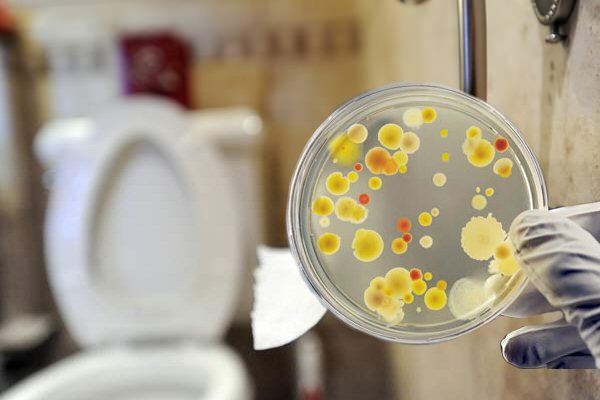Bacteria testing can determine the types and numbers (in terms of colony forming units) of bacteria present in a sample. The testing could be focused on a specific type of bacteria and/or a broad range of environmental bacteria.
Since bacteria are present in virtually any environment, it’s important to be clear why the testing is being performed. The more specific the testing, the better and easier it is to interpret the results.
Numbers and types of bacteria that should be a cause for concern depends upon several factors, including the type of bacteria present and the type of samples. For example, there should be no indicators of fecal contamination on any substrate material.

Samples and Types of Bacteria Testing Services at VSEC
Air Samples for Bacteria Testing
Air samples for bacteria
Surface Samples for Bacteria Testing
Surface bacterial samples may be taken with culture-swabs. The samples may be taken from any kind of surface (dry/wet) suspected of bacterial contamination. Surface samples for bacteria testing may also be collected to assess the efficacy of bacteria agents. Both quantification and identification of the types of bacteria present in the sample are possible.
Well Water Samples for Bacteria Testing
Bacterial contamination of well-water is common. Contamination can be determined by testing for coliform bacteria that are indicators of sewage contamination. Water can also be analysed for other types of bacteria such as iron, sulfur or slime bacteria that cause blockage of plumbing systems, bad odors, discolorations and diseases.
Specific Types Of Bacteria That We Test
The specific types of bacteria that we routinely test for from surface samples are listed below. If a type of bacterium or test of your interest is not listed here, please contact us.
Coliform Analysis
Coliforms are common environmental bacteria and may be found in soil, on hands, on equipment surfaces, in water and other environments. Coliform, tests, as a group, are used as an overall indication of sanitation efficiency. Most coliforms are not harmful (pathogenic), but if a coliform test indicates their presence, it is considered to be an indication of unsanitary conditions.
Testing can be performed for presence/absence of these bacteria in the samples with or without enumeration. For sampling information, please contact us so that we can discuss the needs of your unique situation.
Escherichia coli
Simply called E.coli, Escherichia coli is one of the main species of bacteria living in the lower intestines of mammals. Except for one strain, E. coli strain O157:H7, the bacterium is not pathogenic. E. coli are a subgroup of the coliform group discussed above. They are the most numerous coliform species and most are considered non-pathogenic (normally not able to cause illness). E.coli can be found in the intestinal tract of warm-blooded animals. The presence of E.coli in foods is considered to be an indication of fecal contamination.
Legionella (Causative agent of Legionnaires’ Disease) Legionella sp. can be isolated from surface water, mud and from thermally polluted lakes and streams; causative agent in Legionnaire’s Disease and Pontiac Fever. In investigations, this organism can also be found in water cooling towers, evaporative condensers, spas, respiratory therapy equipment, showers, water faucets, decorative fountains, ultrasonic mist machines and damp potting soil.
